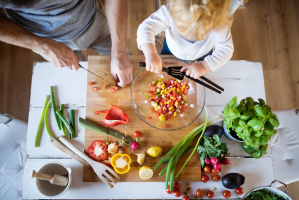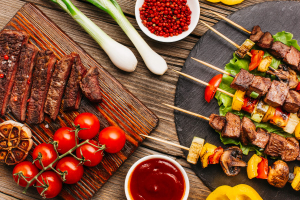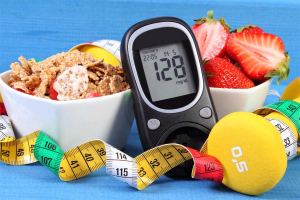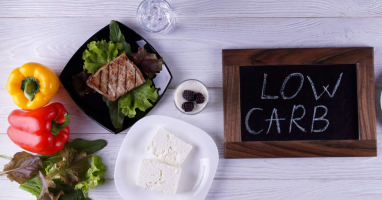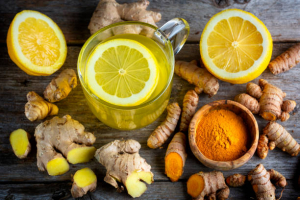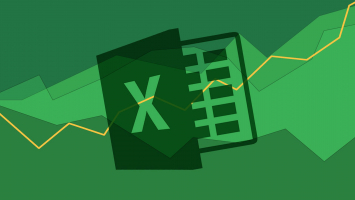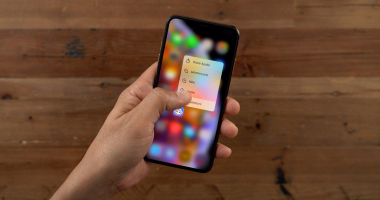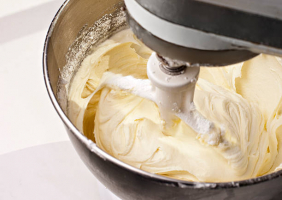Top 8 Tips to Reduce Food Portions Without Increasing Hunger
You may start by eating less while trying to lose weight. But cutting down on your serving sizes without feeling hungry may be difficult. Fortunately, there ... read more...are various methods for reducing calories while avoiding hunger. Let's check out the list below to have more helpful information!
-
Vegetables are high in fiber and water, so they help you feel full while being low in calories. You may eat the same amount of food while reducing total calories by replacing non-starchy veggies with half of the carbohydrate or protein in your meal.
In one study, consuming vegetables high in inulin (a fermentable dietary fiber that can boost "good" gut flora and bring health benefits) resulted in increased satiety and a decreased desire to eat sweet, salty, and fatty foods. Smoothies are a pleasant and tasty way to satisfy hunger and refuel your body. Reduce the number of other foods on your plate and fill the balance with non-starchy veggies. When cooking mixed dishes, you may use the same concept. Add more veggies to your favorite recipes to reduce calories and increase the nutritional content.
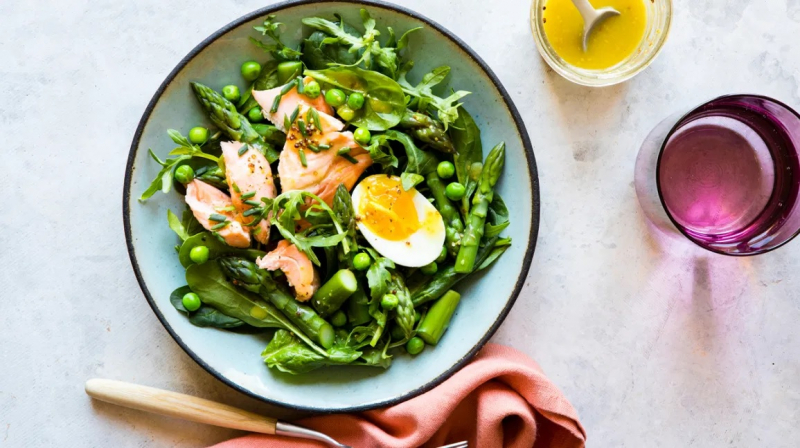
Make at Least Half Your Plate Veggies 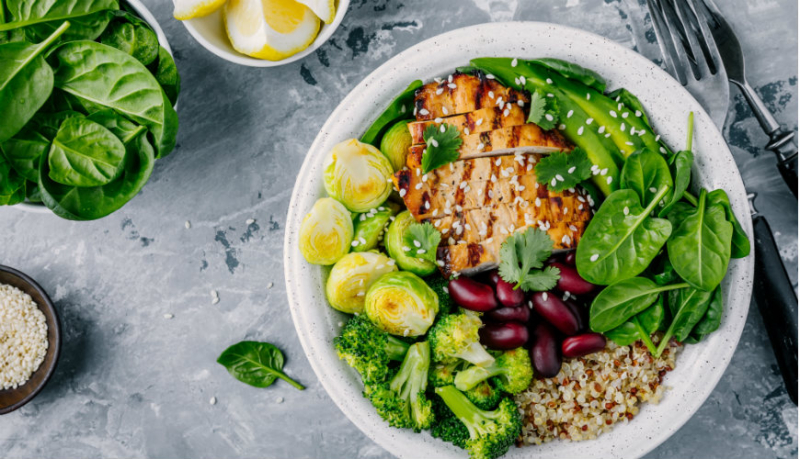
Make at Least Half Your Plate Veggies -
Protein increases feelings of fullness more than carbs or fat, according to scientific evidence. The effects of consuming high-protein meals on feelings of fullness were investigated in a 2012 research. Protein accounted for 20–30% of the calories consumed by the participants. The scientists found that those who ate protein-rich meals felt fuller in the short and long term than those who ate meals with half as much protein.
Include protein in every meal and snack to take advantage of its satisfying properties. Focus on lean protein sources including eggs, skinless poultry, dairy, shellfish, and fish. Plant-based proteins, such as beans, bean dips, tofu, and nut butter, are also healthy options. Add some plain Greek yogurt to your breakfast smoothie; pair whole-grain crackers with string cheese or hummus; or add beans or a hard-boiled egg to salad to get a protein boost in different meals and snacks.
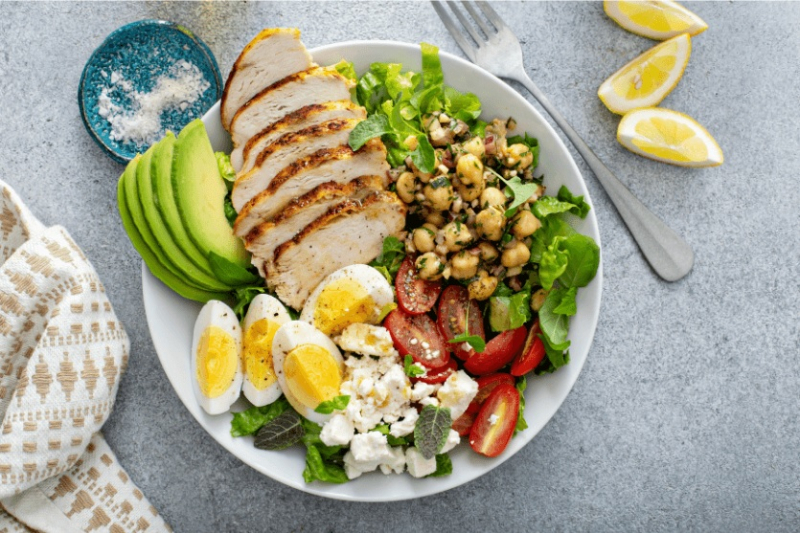
Eat Protein With Every Meal or Snack 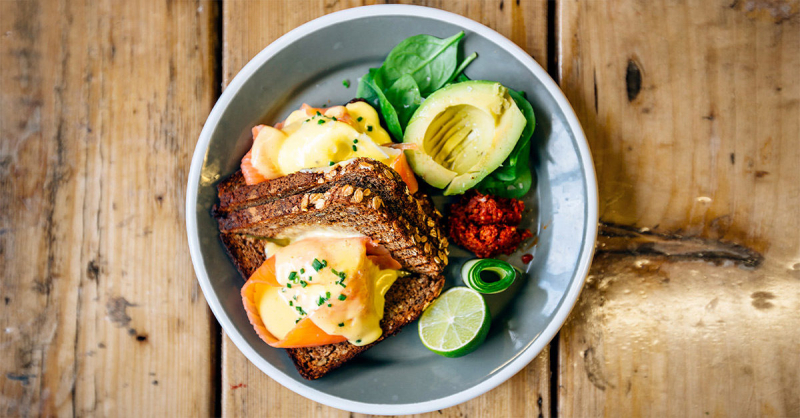
Eat Protein With Every Meal or Snack -
Drinking calorie-rich liquids such as juice or soda does not make you feel full, but it does leave you with extra calories. Drinking water before a meal will help fill you up and lower your risks of overeating.
Research has shown that drinking two cups of water before your meal can help control your appetite and prevent overeating. In one research on older adults, those who drank roughly 2 cups (500 ml) of water before breakfast ate about 13% less than those who did not drink any water before eating. Substituting water for high-calorie beverages might help you cut calories from your meal. To quench your thirst without adding calories to your diet, drink water or other zero-calorie beverages with your meal.

Drink Water Before Your Meal 
Drink Water Before Your Meal -
Starting your meal with a soup or salad will help you eat less at the meal. For five weeks, participants in one research ate lunch in a lab once a week. When they were served soup before the main meal, they consumed 20% fewer calories throughout the course of the meal than when they were served the main meal alone.
When the same researcher served salad before a spaghetti meal. People ate 7% fewer calories during their meal when they ate a small salad before their pasta than when they headed directly to the pasta. They ate 12% fewer calories when they ate a large salad. Light vegetable soups and salads have one thing in common, they're both high in water, packed with fiber-rich vegetables, and low in calories. This high-fiber, high-water combo appears to be an effective way to limit subsequent caloric intake.
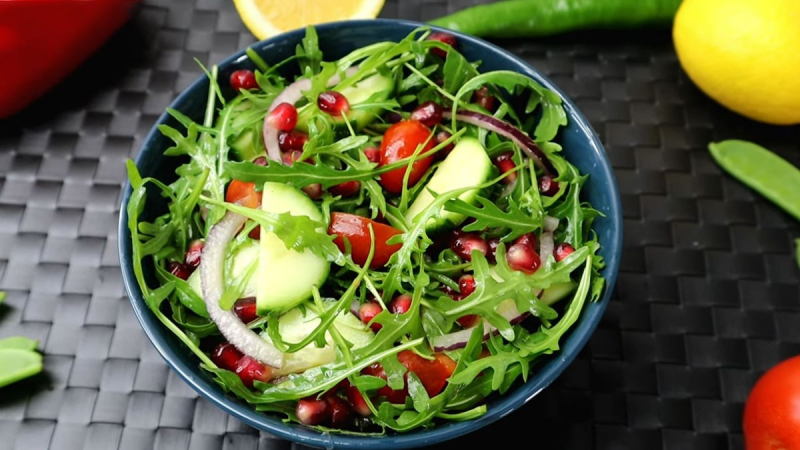
Begin With a Vegetable Soup or Salad 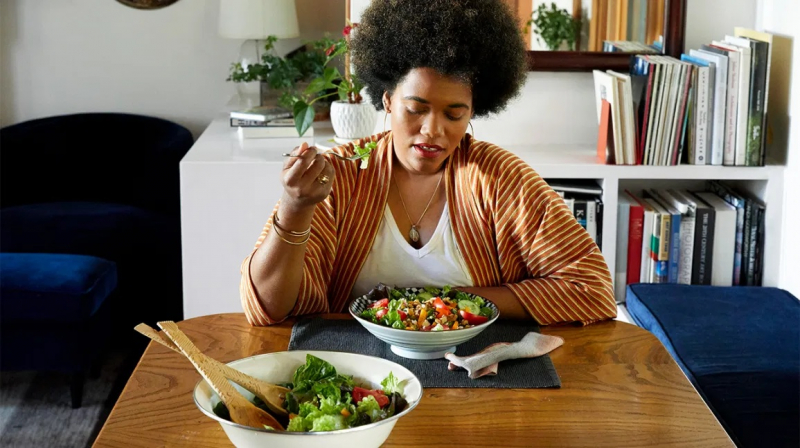
Begin With a Vegetable Soup or Salad -
It may seem strange, but the size of your plates and eating utensils have an impact on how much food you consume. In one study, researchers discovered that people, regardless of plate size, tend to fill their plates to roughly 70% full.
You're more likely to eat more when you have more on your plate. In other studies, those who used a larger spoon offered themselves more ice cream and ate less food when they used a little fork. So use a smaller dish and utensils, you'll eat less since the same portion will appear larger. Moreover, smaller utensils help you eat more slowly, which gives your body more time to send you “I'm full” signals and helps prevent overeating.
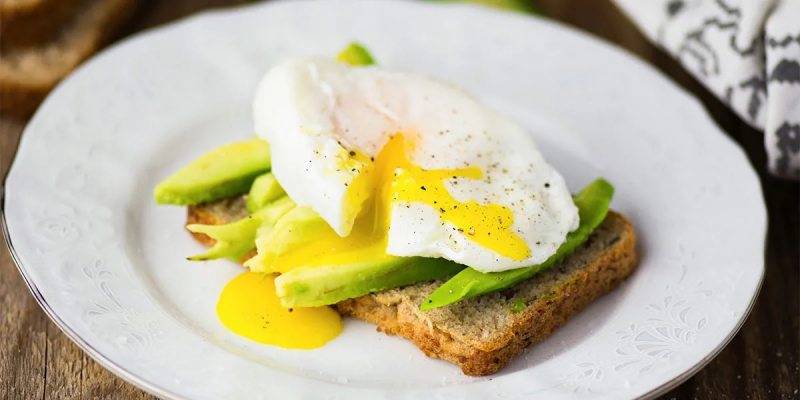
Use Smaller Plates and Forks 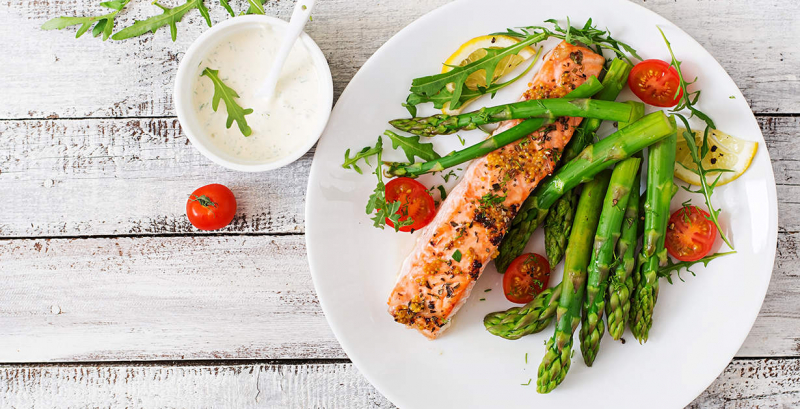
Use Smaller Plates and Forks -
When you're surrounded by your phone or television, it's likely to lead to distracted eating, which drives you to eat more throughout the day, not just at that meal.
Mindful eating, or paying full attention to what you're eating without being distracted, can help you notice your body's hunger and fullness cues so you can determine when you've eaten enough. Mindfulness can also help you in distinguishing between physical and emotional hunger. When you're hungry, evaluate if you're truly hungry or whether you're just bored or experiencing another emotion. If you have a habit of eating emotionally, try going for a walk, exercising, drinking a cup of tea, or writing in a diary before eating. Instead of multitasking during meals, set aside at least 20 minutes to focus on your food.
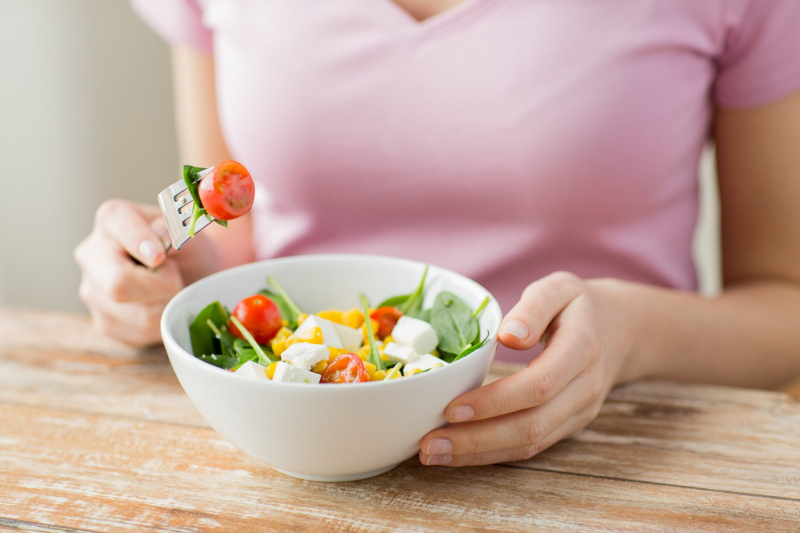
Eat Mindfully 
Eat Mindfully -
Adding hot peppers to your diet may help you to consume fewer calories. Capsaicin, a chemical found in hot peppers, has been shown to reduce appetite and hunger. Eating spicy peppers at breakfast suppresses hunger for the remainder of the day, resulting in weight loss. Furthermore, spicy peppers increase metabolic rate by causing thermogenic processes in human bodies to produce heat. This process consumes energy and, as a result, consumes more calories.
In one research, those who ate hot red pepper as an appetizer consumed 190 fewer calories during a subsequent lunch and snack than those who did not. If you can't stand the heat, ginger can be a good substitute. In one research of ten overweight men, it was found that when they drank ginger tea at breakfast, they felt less hungry than when they didn't.
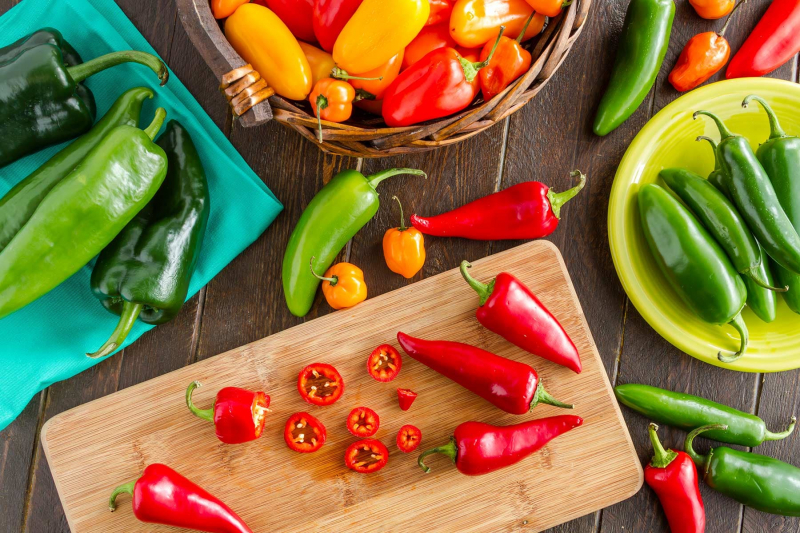
Spice Up Your Meals 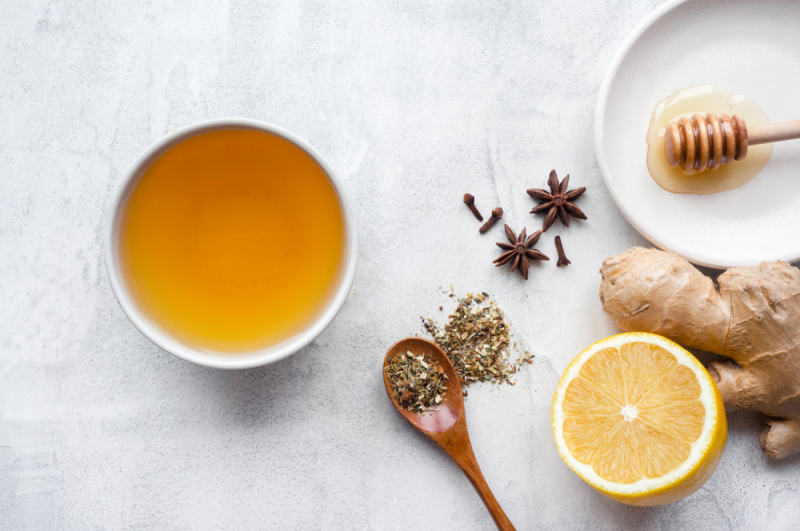
Spice Up Your Meals -
Fiber-rich foods might help you feel full in general. Soluble fiber-rich foods, such as oatmeal, pears, and beans, are particularly satisfying. This is because soluble fiber contains more water, giving it additional volume. Soluble fiber forms a thick gel in the digestive tract, which aids digestion and keeps hunger at bay.
Researchers have discovered that adding soluble-fiber-rich flax or chia seeds to meals boosts feelings of satiety. In one similar study, the same scientists found that eating chia seeds for six months lowered the hunger hormone ghrelin compared to the baseline levels. Add chia or ground flaxseeds to smoothies, yogurt and cereal; top whole-grain oatmeal, buckwheat or millet breakfast bowls with diced apple or pear; add beans to soups, salads and entrées; eat more squash (both winter and summer squashes are high in soluble fiber) or nack on fruit are some simple ways to boost your soluble fiber intake.
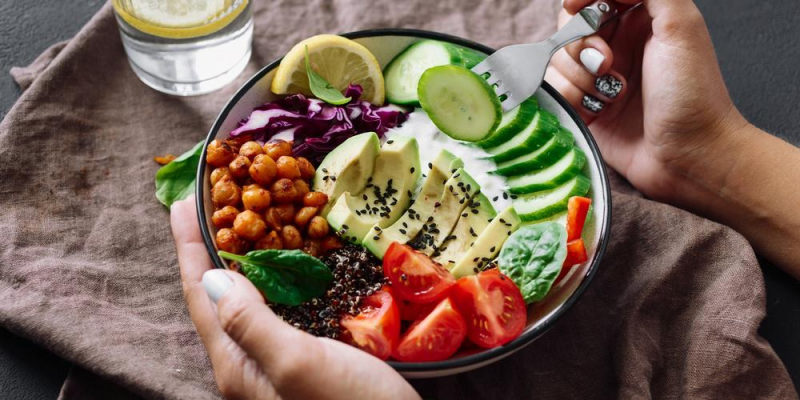
Eat More Soluble Fiber 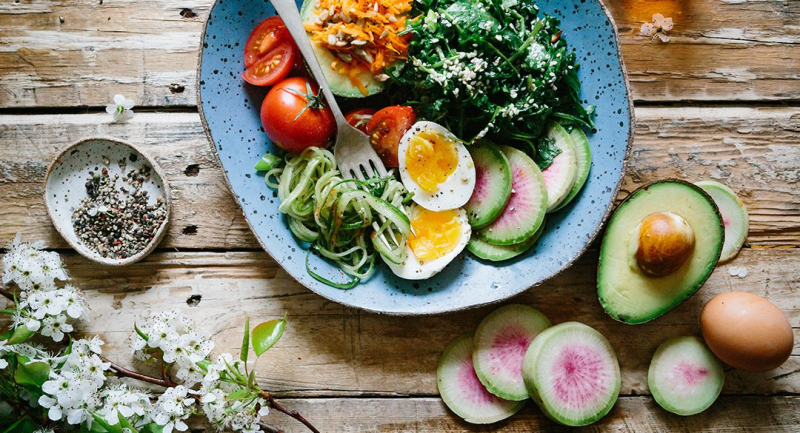
Eat More Soluble Fiber











